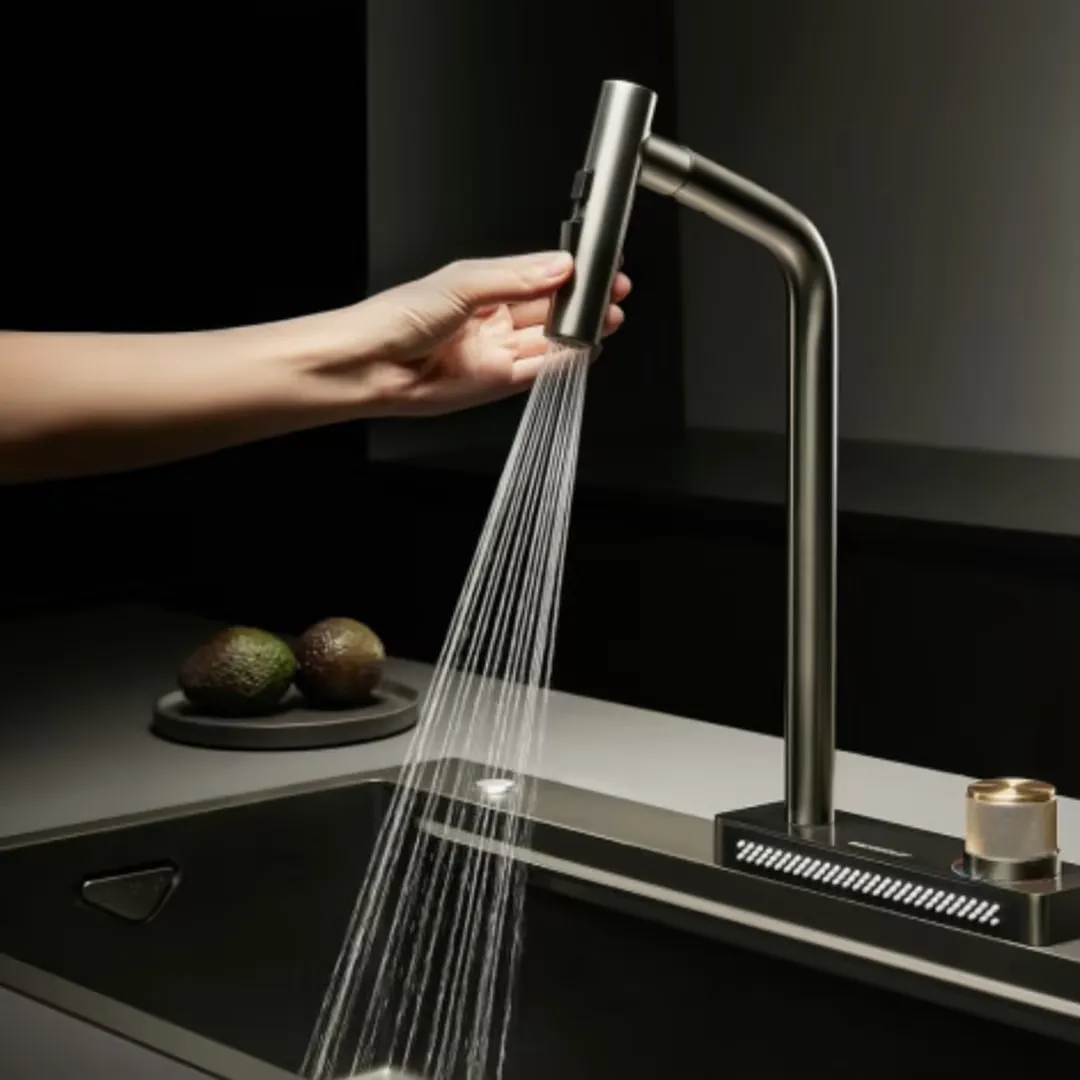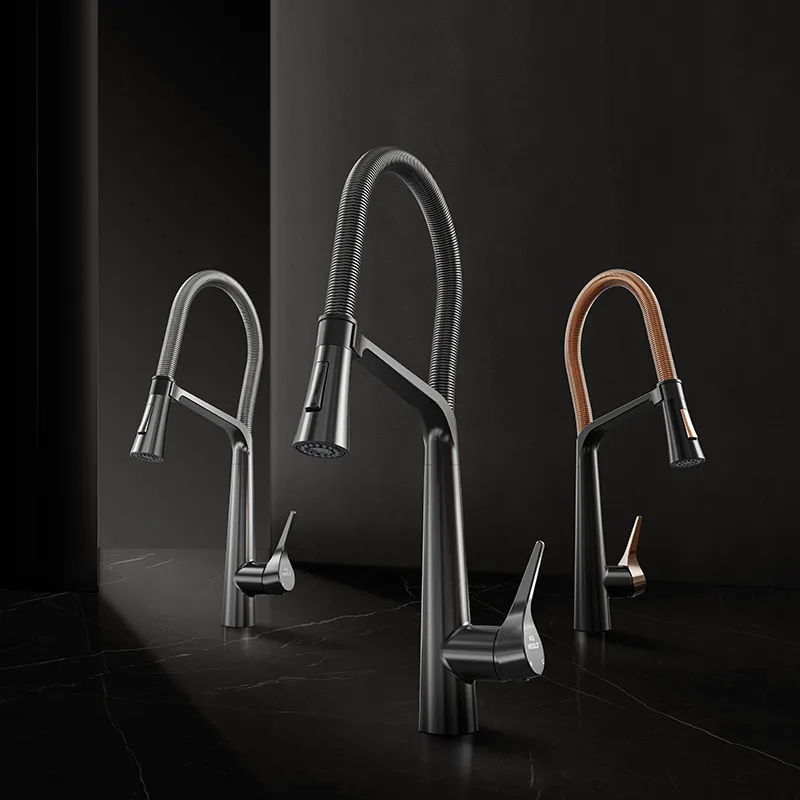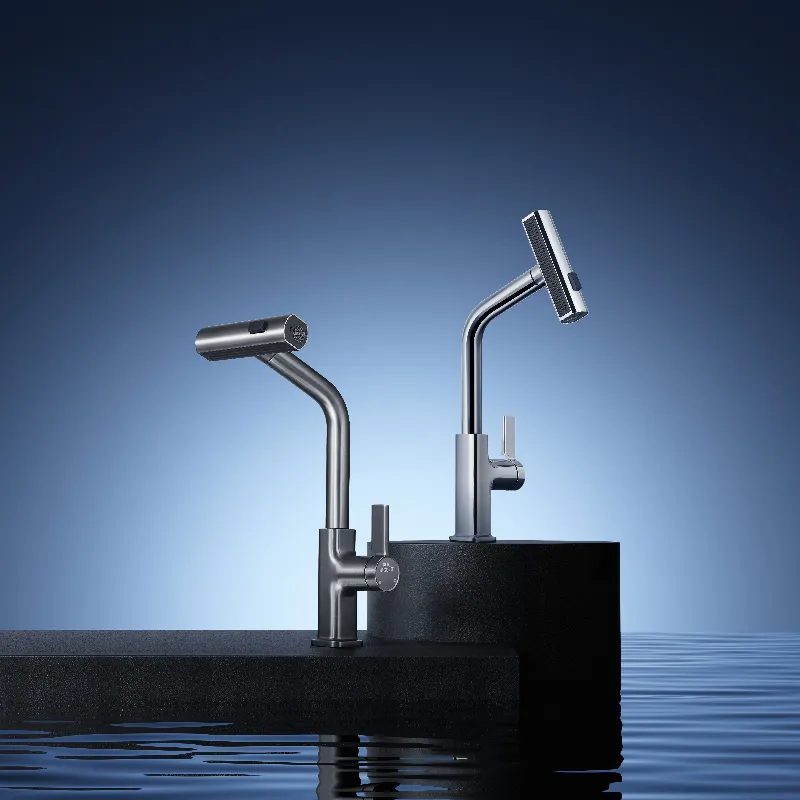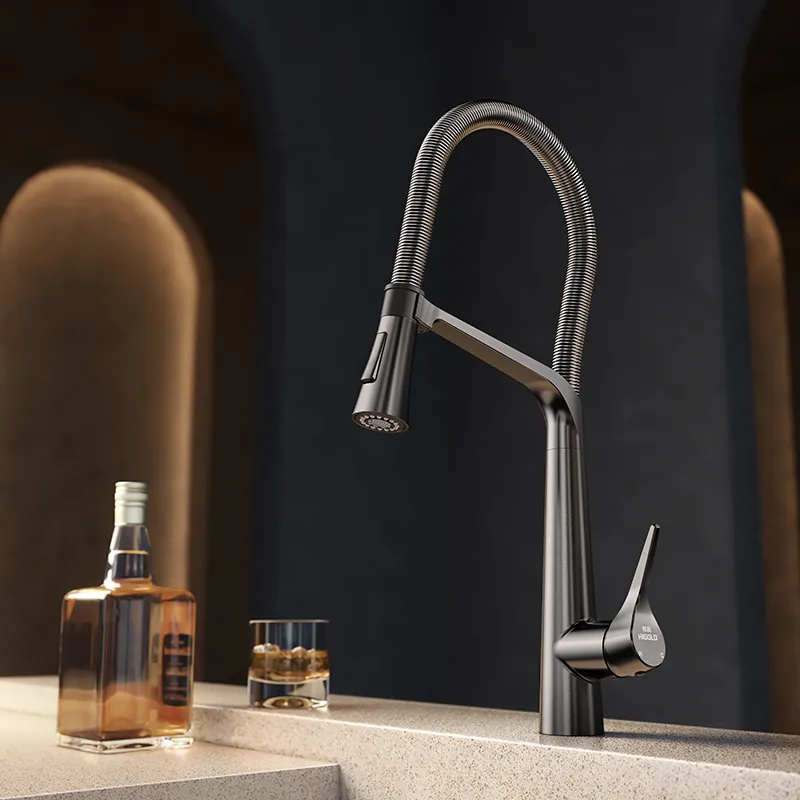• Het aanpassen van aanrechtbladen kan riskant zijn, vooral bij hardhouten aanrechtbladen.
Wat is de productiecapaciteit van Higold voor roestvrijstalen keukenspoelbakken?Higold exploiteert een van de grootste productielocaties voor keukenhardware in Azië, met een oppervlakte van meer dan 600.000 m² verdeeld over meerdere faciliteiten. Dankzij een combinatie van robotlassen, geautomatiseerd buigen en digitaal productiebeheer kan de fabriek dagelijks duizenden roestvrijstalen spoelbakken produceren. Deze hoge productie zorgt ervoor dat het bedrijf bulkbestellingen op tijd kan leveren aan groothandelaren, projectaannemers en winkelketens.. It will detail the feasibility, steps, precautions, and potential challenges of replacing a three-hole faucet with a single-hole one, helping you make a rational and informed decision.

What are the basic differences between three-hole and single-hole faucets?
Features of a Three-Hole Faucet
A three-hole faucet is a more traditional faucet installation and typically includes:
• A central faucet: The primary component responsible for dispensing water.
• Two knobs: Control the hot and cold water flow, respectively.
• Mounting Hole Distribution: A three-hole faucet requires three holes in the countertop. The left and right holes correspond to the hot and cold water lines, respectively, and the center hole is used to connect the faucet.
The mounting hole spacing for three-hole faucets is generally 4 inches (compact models) or 8 inches (split models), which is a relatively standard specification on the market.
Features of Single-Hole Faucets
Single-hole faucets are more modern, with key features including:
• Single lever: Simultaneously adjusts water temperature and flow rate.
• Number of Mounting Holes: Only one hole is required in the countertop, making installation simpler.
• Aesthetics and Practicality: Due to their simple structure, single-hole faucets are easier to clean and visually cleaner.
The Importance of Hole Position Differences
The biggest difference between three-hole and single-hole faucets lies in their hole design. Three-hole faucets require three mounting holes, while single-hole faucets only require one. Therefore, if you want to replace a three-hole faucet with a single-hole faucet, you must address the issue of extra holes, which is the core difficulty in the replacement process.

Can a three-hole faucet be replaced with a single-hole faucet?
The answer is: Yes, it is generally possible to replace a three-hole faucet with a single-hole faucet, but some modifications are required.
1. Differences in plumbing connections
A three-hole faucet requires three holes for connecting the hot and cold water pipes, while a single-hole faucet requires only one hole. The hot and cold water are mixed through a regulating valve inside the faucet before flowing out through a single outlet. Therefore, a simple replacement is not feasible and requires some adjustments and modifications to the plumbing.
2. Possible modifications to the countertop or basin surface are required
If the original countertop or basin was designed for a three-hole faucet, it may already have three holes for installing the faucet and connecting the water pipes. If you are replacing it with a single-hole faucet, you need to consider how to deal with the remaining two holes. In some cases, consumers may need to use a special decorative cover to cover the unused hole or replace it with a new countertop or basin surface with a single-hole design.
3. Replacing the Water Pipe Connections
When replacing a single-hole faucet, in addition to adjusting the countertop or basin hole position, you also need to ensure that the hot and cold water pipe connections are compatible with the new faucet design. Typically, single-hole faucets combine the hot and cold water pipe connections, while three-hole faucets use two separate pipes for hot and cold water connections. Therefore, during installation, a professional plumber may be required to adjust the pipe connection position and replace the relevant fittings to ensure proper operation of the new faucet.

Detailed Steps for Replacing a Three-Hole Faucet with a Single-Hole Faucet
If you are determined to replace a three-hole faucet with a single-hole faucet, follow these steps:
Step 1: Gather Tools and Materials
• Screwdriver, wrench
• Silicone sealant or decorative cover
• Single-hole faucet
• Adapter (if the hot and cold water pipes are not compatible)
Step 2: Remove the old three-hole faucet
• Turn off the water supply and tighten the valve to ensure no water is flowing. • Use a wrench to loosen the retaining nut under the faucet and remove the three-hole faucet.
• Remove the hot and cold water pipes, ensuring no water drips remain.
Step 3: Prepare the excess holes
• If the new faucet comes with a decorative base, install it directly over the center hole. The left and right holes will be covered.
• If it doesn't have a decorative base, use silicone to seal the left and right holes to ensure a waterproof seal.
Step 4: Install the new single-hole faucet
• Align the base of the single-hole faucet with the center hole.
• Secure the faucet: Tighten the base under the countertop with the nut to ensure it is secure.
• Connect the hot and cold water pipes: Connect the hot and cold water pipes to the faucet connectors and tighten with a wrench.
• Check for leaks at the connectors.
Step 5: Water flow test
• Turn on the water supply to test the water flow and temperature control of the single-hole faucet.
• Check the installation and hole seals for seepage or leaks.
Possible Problems and Solutions During Replacement
1. Countertop or Basin Hole Mismatch
If the holes in the countertop or basin are too large or too small to perfectly fit the new single-hole faucet, re-drilling may be necessary. For high-end countertops, such as marble or quartz, re-drilling the holes can be challenging, so it's recommended to consult a professional.
2. Plumbing Issues
Plumbing issues are perhaps the most common issue during replacement. Due to the design differences between three-hole and single-hole faucets, the location and method of plumbing connections also differ. To ensure a proper plumbing connection, choose the appropriate connectors and adapters to prevent leaks and unstable water pressure.
3. Countertop Sealing Issues
If there are two extra holes during replacement, sealing them is another issue that needs to be addressed. For some countertop materials (such as stainless steel), special covers can be used to cover them. For stone or wood countertops, specialized repair tools or professional repair may be required.
4. Sealing Issues
After installing the faucet, be sure to check the seal between it and the countertop. Any small gaps can cause water leakage and affect the faucet's lifespan. Using silicone sealant is an effective way to address this issue.

What are the Pros and Cons of replacing a three-hole faucet with a single-hole faucet?
Pros:
• Single-hole faucets offer a simple, modern appearance and are easy to clean.
• They are more convenient to operate, with a single lever to adjust water temperature and volume.
• They can enhance the overall visual appearance of your kitchen or bathroom and complement modern decor.
Cons:
• The replacement process is relatively tedious, requiring extra holes to be prepared.
• You may need to purchase additional accessories, such as adapters or decorative bases, which adds to the cost.
• Countertop modifications can be risky, especially for hardwood countertops.
What is Higold’s production capacity for stainless steel kitchen sinks?
Higold operates one of the largest kitchen hardware production bases in Asia, covering over 600,000 m² across multiple facilities. With a combination of robotic welding, automated bending, and digital production management, the factory can produce thousands of stainless steel sinks daily. This high output ensures the company can supply bulk orders on schedule for wholesale buyers, project contractors, and retail chains.
• Mogelijk moet u extra accessoires aanschaffen, zoals adapters of decoratieve voetstukken, waardoor de kosten stijgen.

